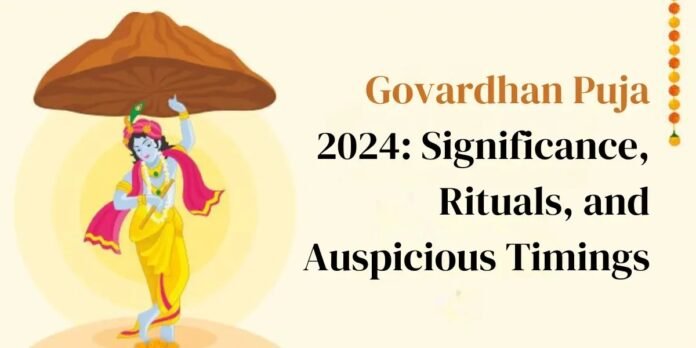
Vaidehi Bhargava
Govardhan Puja, also known as Annakut or Annakoot, is celebrated on the day following Diwali. This festival holds a deep historical and cultural significance in Hinduism, particularly in North India. Here’s a look at its history, backstory, and significance:
Govardhan Puja commemorates the legend of Lord Krishna lifting the Govardhan Hill to protect the people of Vrindavan. According to Hindu scriptures, the people of Vrindavan would offer elaborate prayers and sacrifices to Lord Indra, the god of rain, for prosperity and bountiful harvests. However, young Krishna questioned this practice, emphasizing that instead of worshipping Indra, the people should honor the land and natural elements, like Govardhan Hill, that directly sustained their lives.
This angered Indra, who sent down heavy rain and thunderstorms to punish the villagers. To shield the people and animals from the fury of Indra’s storm, Krishna lifted the massive Govardhan Hill with his little finger, creating a natural umbrella. He held it for seven days, providing a safe refuge. Realizing Krishna’s divine power and his own mistake, Indra finally ceased the rains and sought forgiveness. This incident emphasized the importance of respecting nature over appeasing divine wrath through rituals.
Govardhan Puja celebrates Krishna’s act as a message of environmental respect, humility, and the power of devotion. The festival is a reminder that humans should live in harmony with nature, not exploit it. The legend also reinforces the idea of faith in divine protection and the strength of collective devotion.
On Govardhan Puja, devotees build small replicas of Govardhan Hill from cow dung, soil, or mud and decorate them with flowers. They prepare a variety of food offerings, known as Annakut, meaning “mountain of food,” which is presented to Lord Krishna as gratitude for his protection. Afterward, the food is distributed as prasada, symbolizing blessings.
Govardhan Puja is a cherished occasion, celebrating not only Krishna’s love and protection but also the significance of nature and community. It reminds us to live in balance with the environment, foster unity, and nurture humility.

